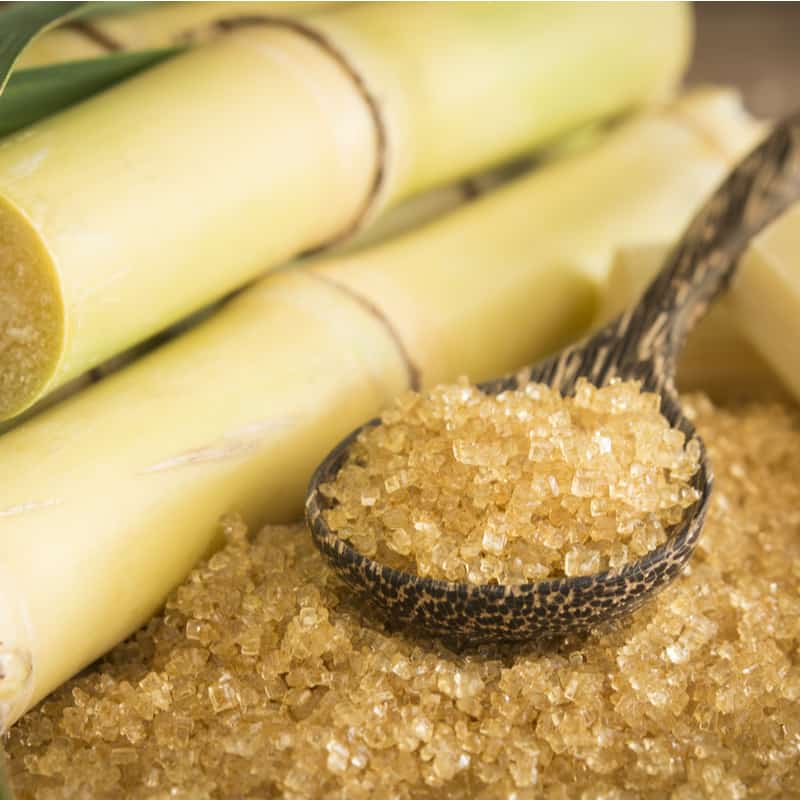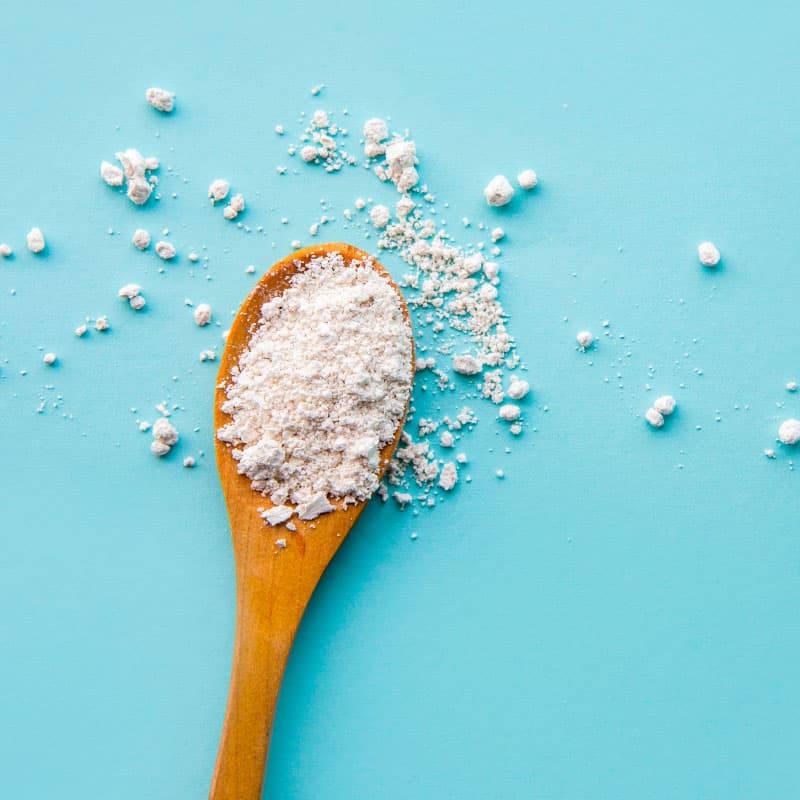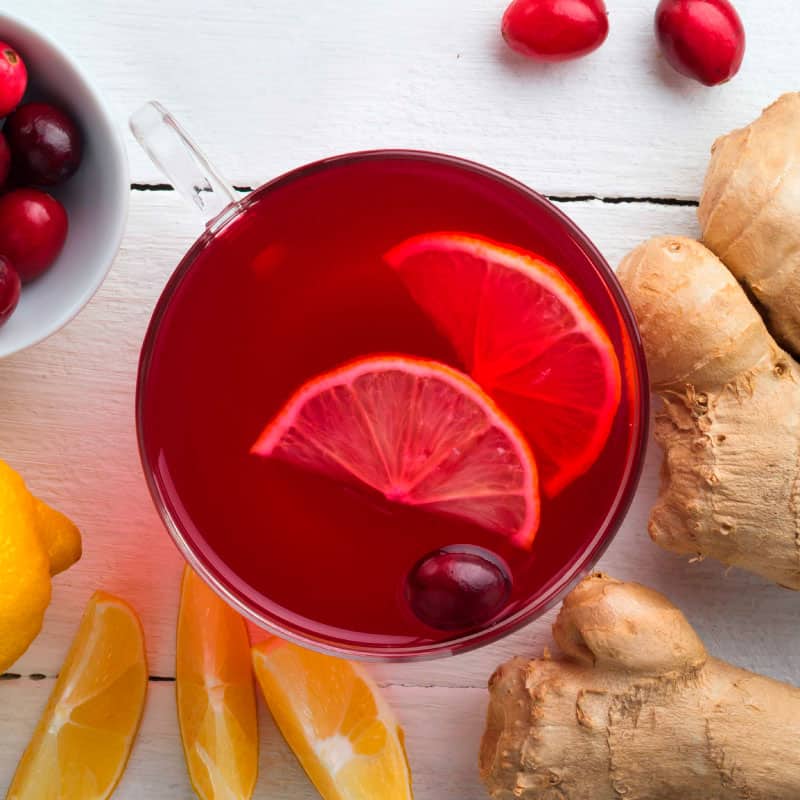This Dr. Axe content is medically reviewed or fact checked to ensure factually accurate information.
With strict editorial sourcing guidelines, we only link to academic research institutions, reputable media sites and, when research is available, medically peer-reviewed studies. Note that the numbers in parentheses (1, 2, etc.) are clickable links to these studies.
The information in our articles is NOT intended to replace a one-on-one relationship with a qualified health care professional and is not intended as medical advice.
This article is based on scientific evidence, written by experts and fact checked by our trained editorial staff. Note that the numbers in parentheses (1, 2, etc.) are clickable links to medically peer-reviewed studies.
Our team includes licensed nutritionists and dietitians, certified health education specialists, as well as certified strength and conditioning specialists, personal trainers and corrective exercise specialists. Our team aims to be not only thorough with its research, but also objective and unbiased.
The information in our articles is NOT intended to replace a one-on-one relationship with a qualified health care professional and is not intended as medical advice.
Wasabi Benefits the Gut + Fights Food-Borne Bacteria
September 2, 2023
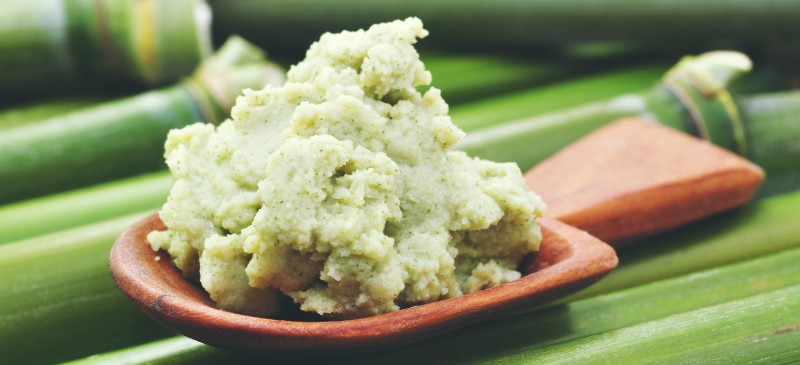
If you’ve ever eaten sushi, you’re likely familiar with the beautiful, pistachio-green, paste-like dollop of color known as wasabi that typically adorns the plates of rolls and sashimi.
I’m sure you can recall that first time when the somewhat painful rush of vapors hit your nasal passages combined with the wakame seaweed, rice, soy and a horseradish-like blend of flavors. You may have even been warned to have just a little bit mixed with your soy sauce, but did you heed the warning?
It’s the mustard-like taste mixed with the excitingly burning feeling of wasabi that many long for when eating their sushi, and due to its popularity, it’s now become a favorite among other treats, such as wasabi peas and wasabi popcorn.
Fortunately, when you get your hands on some real wasabi (and not the fake stuff that’s commonly offered in restaurants) it also has a host of health benefits — everything from improving gut health to treating foodborne illnesses and even potentially combatting cancer cells. So let’s dig in and clear our sinuses with this powerful flavor-enhancer.
What Is Wasabi?
True wasabi comes from the root-like stem, or rhizome — which is similar to the consistency of fresh ginger — scientifically known as Wasabia japonica. It’s part of the Cruciferae family and a relative to plants like cabbage, cauliflower, broccoli, horseradish and mustard greens.
Wasabi is generally cultivated in Japan, and it’s sometimes referred to as Japanese horseradish. It has an extremely strong and stimulating flavor that’s accompanied by a burning sensation. The pungent constituents of wasabi come from allyl isothiocyanate (AITC), which is known as mustard oil and derived from cruciferous vegetables. AITC forms in wasabi immediately after the root is grated very finely, when a glucosinolate in wasabi reacts with the enzyme myrosinase.
The wasabi plant grows naturally along stream beds in the mountain valleys of Japan. Growing wasabi is difficult, which is why real wasabi is hard to come by in restaurants. Wild wasabi only thrives in certain areas of Japan, but farmers in other locations, including the U.S., have made an effort to create the perfect environmental conditions for the plant.
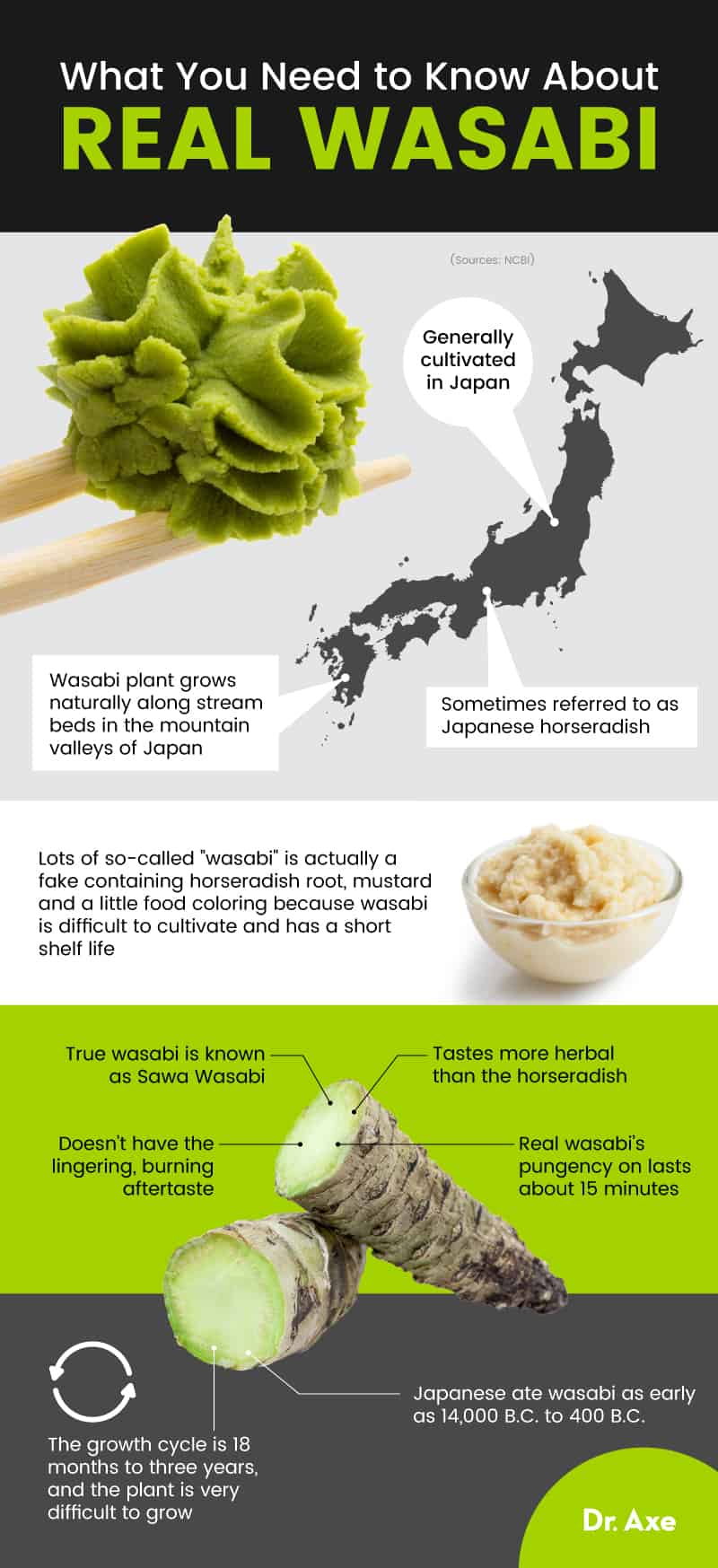
How to Tell Real vs. Fake Wasabi
It’s true that real wasabi provides a range of health benefits, but how do you know that you’re eating the real thing? Interestingly, this Asian superfood you’ve eaten may actually be a fake. Instead, it’s likely a good substitute containing horseradish root, mustard and a little food coloring. Even in Japan, where it’s derived, getting the real thing may be a challenge.
It’s also common to see European horseradish as wasabi’s replacement in many culinary dishes. Why? A few reasons lead to this. One is that horseradish still provides that nasal vapor, even if kept overnight, whereas the pungency of real wasabi only lasts for about 15 minutes. This is why it’s best to grate it as you need it. Ideally, you would have your rhizome and your own grater at a restaurant so you get it as fresh as possible.
The flavor is greatly affected by how finely it’s grated. Traditionally, the best way to grate wasabi is by using a sharkskin grater, called an oroshi, which resembles fine sandpaper.
So why are we getting the wasabi runaround? It provides challenges due to the difficulty in its cultivation process. Because of this, some companies opt for growth and production using greenhouses. They produce and sell fresh and freeze-dried wasabi rhizomes, jars and tubes of wasabi paste, powder and other condiments flavored with wasabi. For all you sushi lovers out there, you may be able to get the real thing soon.
So how do you know if you have real wasabi? Of course, you can do a little research and ask if you’re trying to seek a true wasabi menu. True wasabi is known as Sawa wasabi, and it’s usually treated as a delicacy. It also tastes more herbal than the horseradish, and while it’s hot, it doesn’t have the lingering, burning aftertaste that you may be used to with the imposter. It tastes smoother, cleaner, fresher, and more plant-like or earthy than horseradish.
Why do we eat wasabi with sushi? It’s meant to accentuate the delicate taste of fish. The taste of real wasabi enhances the taste of sushi, while some argue that the taste of “fake wasabi” is actually too strong for delicate fish and overpowers sushi. You wouldn’t get that “my mouth is on fire” feeling from the real thing.
Nutrition Facts
A one-cup serving of raw wasabi root (about 130 grams) contains approximately:
- Calories: 142
- Total Carbohydrates: 30.6 g
- Fiber: 10.1 g
- Total Fat: 0.8 g
- Protein: 6.2 g
- Sodium: 22.1 mg (1% DV)
- Vitamin C: 54.5 mg (61% DV)
- Vitamin B6: 0.4 mg (24% DV)
- Manganese: 0.5 mg (22% DV)
- Copper: 0.2 mg (22% DV)
- Magnesium: 89.7 mg (21% DV)
- Zinc: 2.1 mg (19% DV)
- Thiamine: 0.2 mg (17% DV)
- Potassium: 738 mg (16% DV)
- Calcium: 166 mg (13% Dv)
- Phosphorus: 104 mg (8% DV)
- Riboflavin: 0.1 mg (8% DV)
- Iron: 1.3 mg (7% DV)
- Folate: 23.4 mcg (6% DV)
- Niacin: 1 mg (6% DV)
*Daily Value: Percentages are based on a diet of 2,000 calories a day.
Wasabi also contains smaller amounts of vitamin A and pantothenic acid.
Health Benefits
In addition to its culinary uses, scientists have started investigating wasabi’s medicinal uses. It’s thought to alleviate symptoms in a number of disorders, including allergies, asthma, cancer, inflammation and neurodegenerative diseases. Here are some of the most important health benefits this common Japanese accompaniment provides:
1. Kills Harmful Foodborne Bacteria
Studies show that wasabi provides a powerful punch when it comes to protection against some bacteria. One study conducted at Chiba University’s Laboratory of Plant Cell Technology in Japan notes that using it on potatoes made them more disease-resistant.
Another study published in the Journal of Applied Microbiology shows the same when applied to tomatoes. Incorporation of selected wasabi culture into potted soil significantly reduced bacterial infection on tomatoes, and treating the tomatoes yielded excellent control efficacies against M. incognita with the fresh wasabi residue. Other than the high price, this could make it a great option for natural disease management using a combination of endophytes, common and highly diverse microorganisms that live within plant tissues and the host residue.
2. Prevents Tooth Decay
Due to its ability to eliminate bacteria, wasabi is a natural antimicrobial agent often used with raw fish. This is mainly because of the isothiocyanate vapors it produces. These vapors help deter the development of yeast, mold and bacteria.
Interestingly, research shows that it can also help prevent tooth decay and cavities by destroying the bacteria that may cause it.
3. Combats Cancer Cells
Wasabi contains powerful phytonutrients, or phytochemicals, called isothiocyanates. Isothiocyanates are sulphur-containing phytonutrients with strong anticancer effects. They occur naturally as glucosinolate conjugates in cruciferous vegetables, like wasabi. When the raw vegetables are chewed, the plant cells are broken down and an enzyme called myrosinase converts into isothiocyanates.
Their anticancer effects occur as they neutralize carcinogens — therefore, reducing the negative impact of the poisons. Studies have shown that isothiocyanates may help prevent lung cancer and esophageal cancer and can help lower the risk of other cancers, including gastrointestinal cancer. That means you can add wasabi to the list of cancer-fighting foods.
4. May Help Reduce Pain Caused by Inflammation
The compounds in wasabi might also help scientists develop a new treatment for pain. Researchers at the University of California at San Francisco studied isothiocyanates that trigger a reaction in the TRP receptors, which are responsible for sending a pain signal to the brain, in the nerve cells in our tongues and mouths.
A scientist bred mice that lacked one type of TRP receptor and found that the mice didn’t react to compounds that contained isothiocyanates. Evidence also shows that the receptor is responsible for inflammation. This means the isothiocyanates may have blocked that receptor — which in turn could make for a useful painkiller.
5. Improves Gut Health
Studies show that the root has characteristics that may suppress bacteria found in the gut, such as gastric inflammation and possibly even stomach cancer. It’s possible that it can prevent food poisoning, which is one of the reasons it’s served with raw fish.
Wasabi peas are a great option for the intestinal tract since they help remove toxic substances from your body by helping eliminate the possibility of getting diverticulitis complications. The detox happens because the peas are high-fiber foods. That fiber is needed to help push stool forward and get it ready for expelling. Without fiber to add bulk to the stool, the colon has to work harder than normal, and the pressure from this may cause pouches to form in weak spots along the colon, creating discomfort and potentially contributing to leaky gut syndrome.
6. Could Be Used as a Smoke Alarm
Now that you know just how amazing wasabi can be for the body, imagine if it could alert you to a fire. The intense vapor that can feel brutal to the nose can actually help those who are hard of hearing.
Japanese scientists focused on its pungent smell to create a prototype of a smoke alarm for the hearing impaired. It works by spraying a wasabi extract into a room when smoke is detected. In this preliminary study, 13 out of 14 test subjects were awakened by the scent within two minutes of the alarm being triggered, and one subject actually woke up in 10 seconds.
Buying and Using Wasabi
This Asian superfood can be found with a little effort, but it can be pricey. You want to look for the “Authentic Asian Superfood” certification mark on the label since all products using this mark have been rigorously tested to ensure they’re authentic.
Real wasabi can be found as a root that can be grated and made into a powder or a paste. You can also make a wasabi sauce, which can be prepared in a variety of ways. It generally includes wasabi paste, lime juice, ginger, salt and vinegar. The leaves of the wasabi plant can be eaten in raw in salads, pickled or even dried into chips similar to kale chips.
As far as the cost of wasabi, it varies depending on the season and the grower’s proximity to the market, as well as the typical supply and demand. It does not travel very well, and if the grower isn’t near the market it sells to and it can’t be delivered to the end user within about two days, it deteriorates. However, if you’re nervous about how long wasabi lasts, if kept chilled and wrapped in a damp paper towel, its shelf life can go as far as 10 days or so.
Real wasabi must be hand-harvested, and because most shops purchase small amounts at a time, the price gets driven upward. The growth cycle is 18 months to three years, and the plant is very difficult to grow — yet another reason that there is a high price on the real stuff. But if you want it, in addition to looking for the “Authentic Asian Superfood” certification mark on the label, check with your local health food store.
When shopping for wasabi, you’ll likely find the wasabi root, or rhizome, for sale. Once you find the real stuff, there are a few tips for preparing wasabi yourself. Fresh wasabi is grated to release its flavor, but first, scrub it very gently. You can peel it before grating, but you don’t have to. Using the finest holes on your grater, carefully grate wasabi and then crush it with the back of a knife to release even more flavor. Allow it to sit for about five minutes, and then your wasabi paste is ready to go.
There’s also an option to buy real wasabi powder, which is usually less expensive than buying the fresh rhizome or paste, but the flavor isn’t exactly the same.
Recipes
There are several ways to incorporate this nutrient-dense plant. Start with the following recipe:
Wasabi Ginger and Garlic Roasted Red Potatoes
INGREDIENTS
- 2 pounds red potatoes, halved
- 3 teaspoons wasabi powder
- 1 full head of garlic
- 2 tablespoons extra virgin olive oil
- 1 teaspoon ginger, minced
- 1–2 teaspoons water
- Sea salt and fresh black pepper to taste
DIRECTIONS:
- Preheat the oven to 425 degrees F.
- Break the raw garlic clove up into separate bulbs and peel.
- Place the potatoes and garlic in a large pot, and cover with cold water. Bring to a boil over high heat, and simmer for about 5–10 minutes. You want to parboil them to help reduce the baking time and help them stay moist. Remove from heat as needed. Finish the process by roasting them in the oven so they can get golden brown and a little crisp.
- In a small glass bowl, mix the wasabi powder and ½ teaspoon of water. Begin mixing and add more water, if needed, until a thick paste is created. Cover and set aside.
- Drain the water from the potatoes, and return the potatoes to the pot. Place the garlic bulbs in the pot with the potatoes.
- Grab the bowl of wasabi and add the ginger, olive oil, salt and pepper. Blend well. Now, add the mixture to the potatoes and garlic until they’re well-coated.
- Place on a cookie sheet or baking dish, and put in the oven until golden brown. You may need to flip them once or twice so they brown on all sides. Watch them carefully so they don’t burn. Remove from the oven and serve warm.
You can also try the following recipes:
History
Grown naturally in mountain streambeds, wasabi has been cultivated by the Japanese for more than a millennium. Some is grown in semiaquatic environments known as Sawa, which yields higher-quality wasabi due to its larger producing rhizomes, and in fields called Oka.
It’s a plant in the Brassicaceae family and is also called Japanese horseradish. The stem is used as a condiment and has an extremely strong pungent effect, much like hot mustard, producing vapors that stimulate the nasal passages more than the tongue.
We’ve learned through excavations of archeological remains that the Japanese ate it as early as 14,000 B.C. to 400 B.C. Once they learned of its antiparasitic and sterilizing effects, they ate small-rooted Sawa wasabi as medicine. The book, “Wasabi No Subete” (“All About Wasabi”), which is a late seventh-century wood strip suggesting the existence of an herb garden, was unearthed in 2001 at the ruins of Japan’s ancient capital in Asukamura, Nara Prefecture. It contained a series of kanji characters signifying wasabi.
We’re not quite sure where it was first cultivated, though Utogi, which is a mountain village in the upper reaches of Abe River in Shizuoka Prefecture, is likely the origin. During the Keicho era (1596–1615), it’s believed that a villager brought home the wild plants from Mt. Wasabi, the source of Utogi River, and replanted them in spring near the village. Eventually, the roots grew large, and the idea of planting it caught on within the village — a village that has since been preserved in Utogi.
In 1607, the plants were presented to Tokugawa Ieyasu, who was the founder and first shogun of the Tokugawa shogunate of Japan. We know that Ieyasu highly prized the wasabi, and we think it’s because its leaves resemble those of the plant Asarum caulescens, which are featured in the family crest of the Tokugawa clan.
The reason it gained prominence with the development of sushi was because the flavor counters the smell of raw fish. This is due to the hot vapors that sting the nose after consumption. It also enhances the appetite and prevents food poisoning, as noted in the study above. It’s no surprise that its cultivation became popular Shizuoka, and it was actively traded in markets given the high consumption of raw fish.
Risks and Side Effects
Just to reiterate, real wasabi and the look-a-like versions made with horseradish usually give a rather intense burning effect in the nasal passages and can even cause the eyes to water. If you’ve never tried it, please start slowly, using only a little bit so you have a better experience. If spicy foods cause problems for you, it may be best to avoid it altogether.
What happens when you eat a lot wasabi? Well, beyond experiencing the burning sensation in your nose and mouth, you may develop some gastrointestinal issues as well. This is because wasabi and other spicy foods stimulate the liver and gallbladder, causing side effects like diarrhea and nausea. Can eating too much wasabi kill you? Although there’s not enough research on this question to answer scientifically, it is unlikely that you will die from wasabi overload. However, you will experience some major digestive and respiratory issues.
Wasabi may slow blood clotting in some people, so if you are having surgery and want to reduce the risk of excessive bleeding, it’s probably best to avoid eating it for at least two weeks beforehand.
Final Thoughts
- Believe it or not, chances are when you think you’re eating wasabi, you’re actually consuming an imposter made with horseradish. Why? Real wasabi’s pungency on lasts about 15 minutes, for starters. Plus, it’s not as easy to produce and keep as horseradish, while they have similar tastes and effects.
- The good news is you can find the real thing. That’s important because the real thing has been shown to kill harmful foodborne bacteria, prevent tooth decay, kill cancer cells, help reduce pain caused by inflammation, improve gut health and even be effective as a smoke alarm.
- So if you can handle spicy, nasal-clearing foods, add this remarkably nutritious condiment to your diet today!




